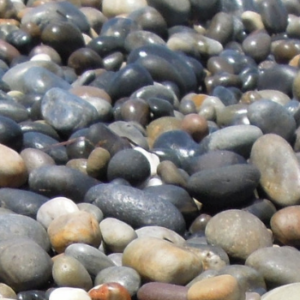The Biggest Global Bird Event of the Year: International Ornithological Congress Vancouver
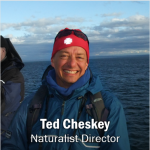
Ted Cheskey, Naturalist Director.
Ted Cheskey, Naturalist Director of Nature Canada attended the 27th International Ornithological Congress in late August, in Vancouver with about 2000 other delegates from around the world. The congress was organized by the International Ornithological Union and co-hosted by Bird Studies Canada (BSC), Nature Canada’s co-partner in BirdLife International. Here is a first person account of the week-long event.
Canadian Migration Monitoring Network – Friday
Many other national and international bird partnerships organized meetings around the IOC to take advantage of their supporters travelling there and being the same place at the same time. The Canadian Migration Monitoring Network, the network of bird observatories across Canada, did just this, and organized their biannual meeting on Vancouver Island just prior to the Congress. I arrived on Friday morning at Vancouver airport, and quickly travelled to Vancouver Island where I joined the CMMN meeting. Many of the CMMN organizations are part of Nature Canada’s Cats and Birds partnership, and are also part of the Canadian Nature Network. Nature Canada’s recent priority of helping small organizations (like bird observatories) become stronger through “engagement organizing” is something that interests several of them. I shared a new resource that Nature Canada has created on engagement organizing as part of my participation in the meeting. A highlight of this meeting for me was attending Dr. David Bird’s talk about the use of drones in ornithological research. Dr. Bird is also well known as an advocate for the Canada Jay to be recognized as Canada’s official bird.
Delta tour – Saturday
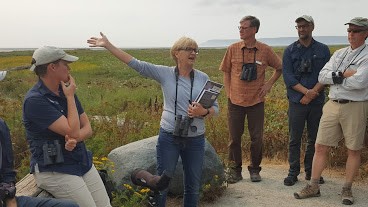
Anne Murrary talks about Boundary Bay.
BSC organized a bus tour of the Fraser Delta for about 40 participants representing a wide range of interest groups sharing interest in protecting the Delta. We made four stops to experience key habitats and issues. At each stop an expert provided a commentary on a major issue for participants. For example, Anne Murray, past Nature Canada Board member and author of two books on Boundary Bay, shared her thoughts on the history of and challenges faced in this biologically rich section of the Delta. Roger Emsley of BC Nature talked of his campaign to stop a major expansion of the container shipping terminal at Robert’s Bank that threatens habitat which supports hundreds of thousands of Western Sandpipers and other species. At another stop, we visited a farm, where the farmer, whose barn was home for the Endangered Barn Owl, lamented about how rodenticides used on some farms in the Delta are gradually killing off the Barn Owls. This trip painted a rich portrait of this remarkable area and the incredibly complex issues and relationship affecting it. Nature Canada is calling for protection of the Delta and a re-invigorated version of the Fraser Delta Management Plan.
Partners In Flight all-day session – Monday
Partners in Flight (PIF) is a network of organizations throughout the Western Hemisphere engaged in all aspects of landbird conservation from science, research, planning, and policy development, to land management, monitoring, education, and outreach. PIF’s mission is: “keeping common birds common and helping species at risk through voluntary partnerships”. To halt and reverse bird population declines before they are listed as threatened or endangered is a cost effective and common sense business model for the future. As many PIF partners were attending the IOC, this “side event” was organized to bring PIF partners together to share international conservation initiatives. Many of the participants were from Latin American countries with which Canada shares the same birds (they breed in Canada and spend their non-breeding season in Latin America). Nature Canada works with PIF partners on the Canada Warbler International Conservation Initiative among other initiatives.
Congress Official Opening – Monday
Organizers of the Congress including a rich mix of culture, art and science, and twinned the Congress with their week-long inaugural Vancouver International Birding Festival. The festival included outings throughout the region for visitors, and pre and post Congress outings for the delegates. Official remarks were made by dignitaries, including newly minted Minister of Fisheries, Oceans and the Canadian Coast Guard, the Honorable Jonathan Wilkinson, the Provincial Minister of the Environment for British Columbia, the Honorable George Heyman, and Dr. Lucia Liu Severinghaus, President of the International Ornithologists Union. After two inspiring speeches by the respective Ministers, Dr. Severinghaus took the stage and lamented how she wished that the same thoughtfulness, inspiration and commitment to environmental protections and bird conservation expressed by the Ministers’ speeches needed to be brought back to her country, and those of most of the other delegates that lack positive political leadership on the environment. This was indeed a moment when I felt proud to be Canadian!
Canada Night – Tuesday
Canada Night celebrated Canada, and some of the people who have made great contributions to bird science and bird conservation. The featured event was a speech by renowned Canadian author, Margaret Atwood. Ms Atwood talked about the many issues that impact birds, naturally including roaming cats. She gave a humorous introduction to her graphic novel series Angel Catbird, which aims to raise awareness and motivate positive action on the issue of cat predation on birds. Listen to an excerpt of her talk by clicking here. This was another proud moment for me – to be Canadian and to be part of the Nature Canada campaign that was kick-started by Ms Atwood to Keep Cats Safe and Save Bird Lives.
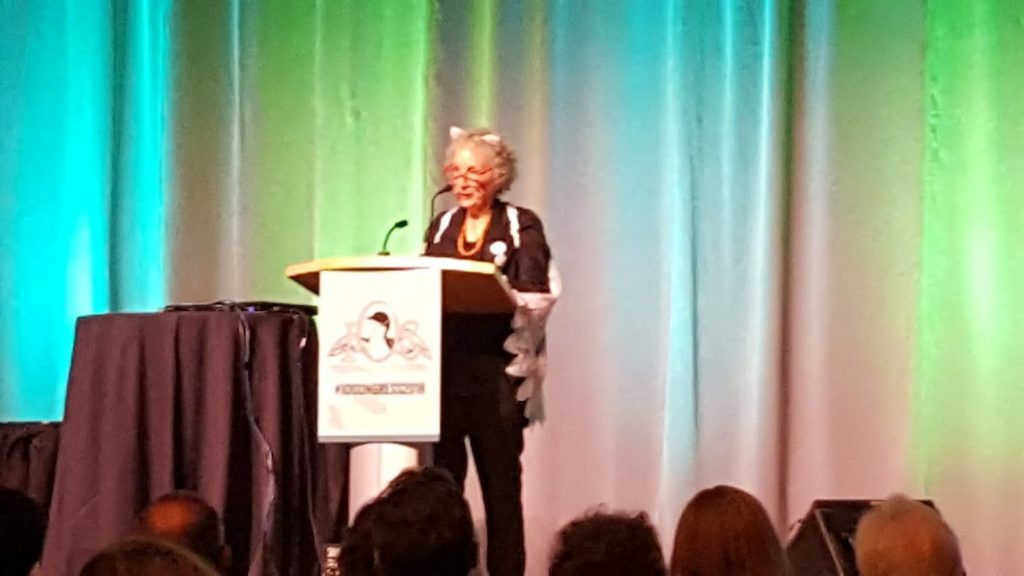
Margaret Atwood in cat ears and bird wings delivers power messages on solutions to bird predation by cats in her unique style
Canada Warbler International Conservation Initiative (CWICI) – Wednesday
Nature Canada has been involved in efforts to recover the population of Canada Warbler since 2013. We host the CWICI website on behalf of the partnership and have contributed significantly to this initiative. I presented to a room of 30 scientists and conservationists, the history of the CWICI. The international effort to develop a range-wide integrated conservation plan for this threatened species is nearly complete. At the session, we focused mainly on the challenges on its non-breeding grounds, the majority of which are between 800 and 2000 metres along the northern Andes from Venezuela to Colombia. That is where the main threat to Canada Warbler is thought to exist. Dr. Anna Gonzales, who very recently received her PhD in part for her work establishing the connectivity between breeding grounds and wintering grounds, provided a summary of her findings for the group. We had a lively discussion on the value of promoting shade-grown coffee in Colombia and elsewhere in Latin America to support the Canada Warbler, and other species with which it shares this habitat. In Canada, Balzac’s and Birds and Beans are two retailers who sell certified, bird-friendly coffee. Nature Canada staff drink only Bird-friendly coffee in the workplace.
Poster on Horned Grebe – Thursday
In 2015, while conducting surveys led by Nature Canada along Charlton Island in the territory of the Cree Nation
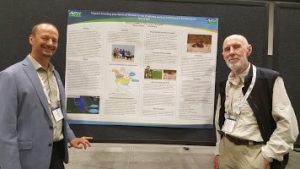
Figure 2 Myself with Editor of the Birds of Nunavut, Anthony Gaston with my poster
of Waskaganish, in Southeastern James Bay, Marc-Antoine Montpetit, our crack birder, found a family of Horned Grebes, including adults and two young, in a beaver pond just back from the shore. He went on to find three other families over the next several days on other beaver ponds. That discovery represents a significant range expansion of the species at risk. The nearest confirmed breeding is over 700 kilometres to the west and about 1300 to the east. I was able to present this story in the form of a poster at the IOC, during one of the poster sessions. The way that works, is that I put my poster up for three days, and had to stand in front of it for 90 minutes on Thursday afternoon to engage interested passersby. We are always grateful to work with the Cree communities around James Bay. One of the unexpected benefits of this work, largely focused on shorebirds, is the discover of threatened species in places where they were previously unknown.
Stewardship Roundtable
The final event in which I participated was called the Stewardship Roundtable, organized by the BC Stewardship Centre and BSC. The Roundtable consisted of a series of 90 minutes sessions, that included a panel of experts presenting, followed by an open discussion on significant bird conservation issues of interest locally and beyond. This Roundtable was also open to the public and attracted many people who were not attending the Congress. Our Cats and Birds Program Manager Sarah Cooper and I were panelists with three other cats and birds experts on one of the first sessions on stewardship solutions to this difficult problem. We had a lively but polite discussion that included the participation of Dr. Pete Marra, Director of the Smithsonian Migratory Bird Centre. After that session, went immediate to a second panel, this time under the theme of agriculture and birds. One of my fellow panelists was Dr. Christy Morrissey, of the University of Saskatchewan. Dr. Morrissey is a world expert on the impact of neonics on birds and other wildlife, though she largely steered clear of the issue in the session. My presentation was on the relationship between trends in agriculture in Canada and trends in bird populations.
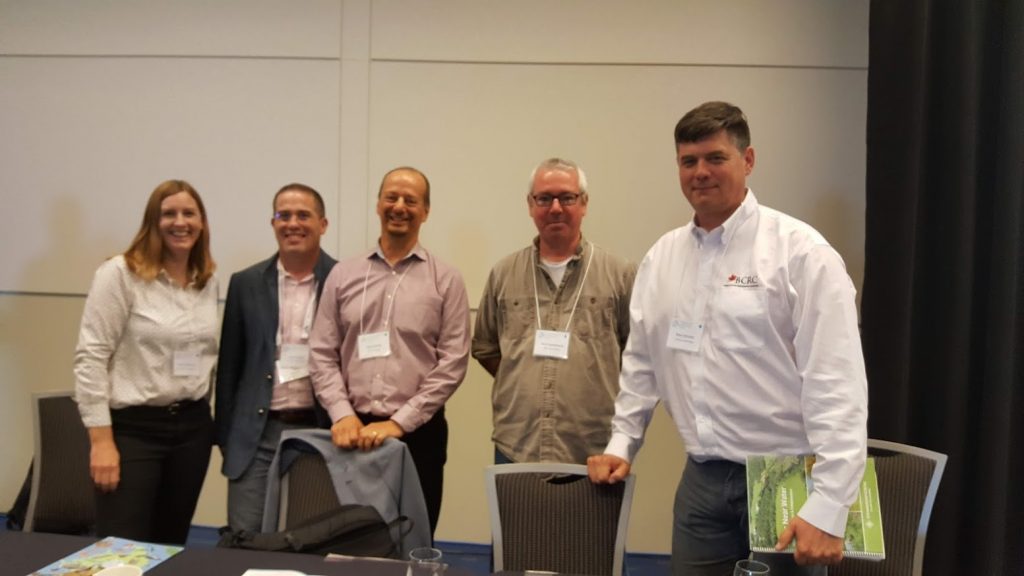
Agriculture and Birds panelists including Dr. Morrissey on far left and me, third from the left
A final word
Most of this post is about the events I participated in, mainly as a presenter. But one of the reasons why there is enormous value in these types of conferences is the casual and formal conversations with colleagues, friends and potential partners that take place every day at this type of event. On that level, the meeting was extremely rich, and I am grateful to Nature Canada for supporting my participation, and to Margaret Atwood and Graeme Gibson for supporting Sarah Cooper’s participation.
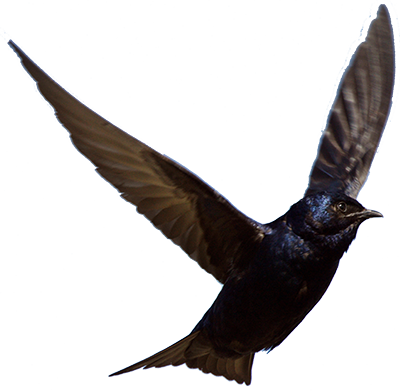
Want more nature news?Join our 80,000 nature lovers raising their voices for nature! |

